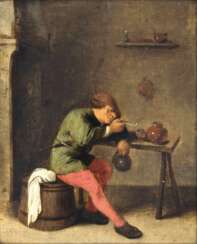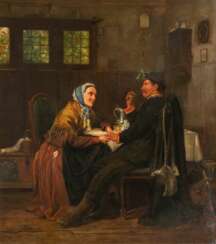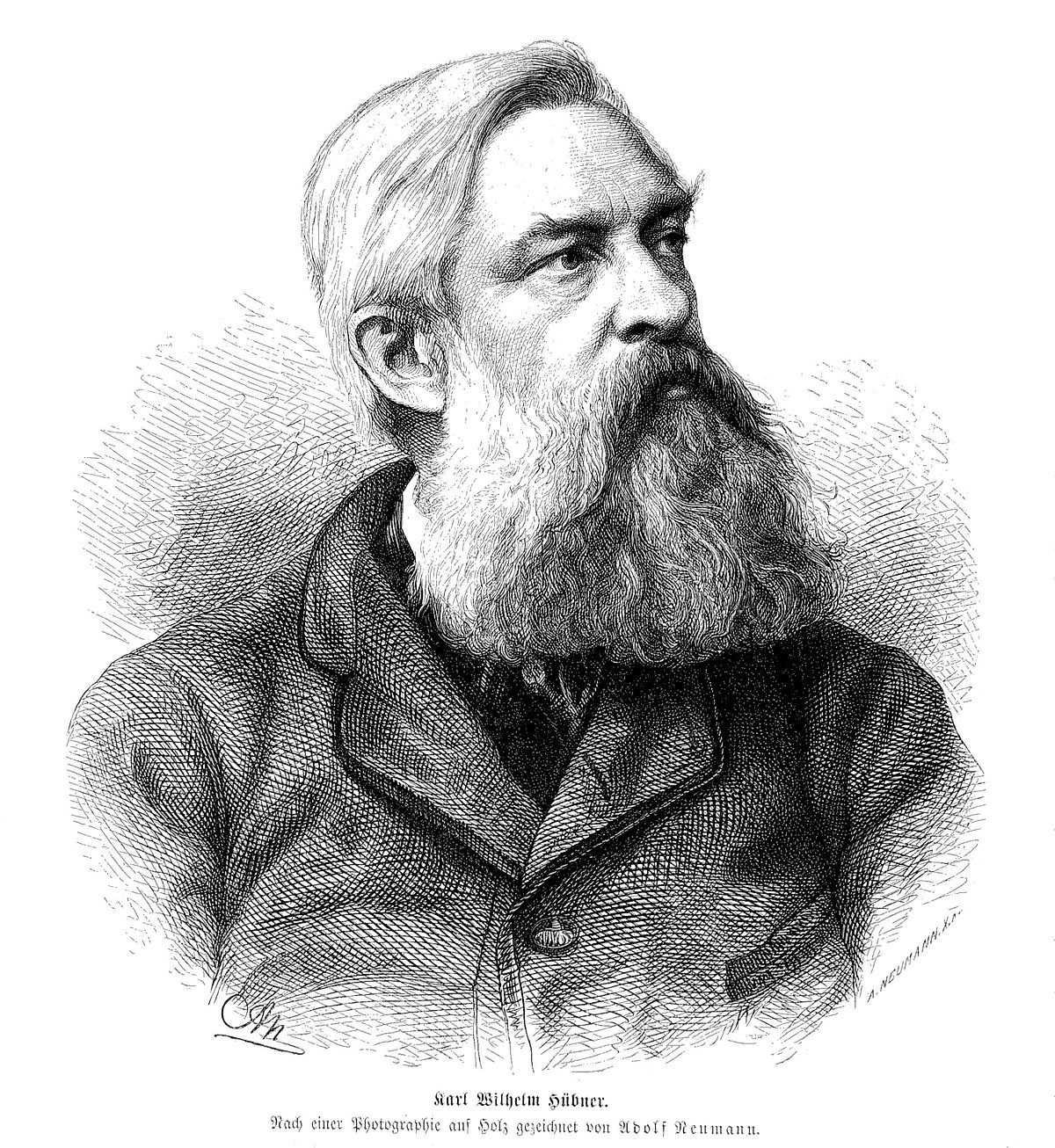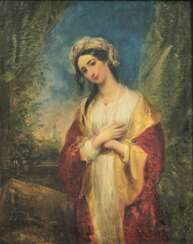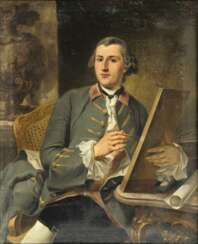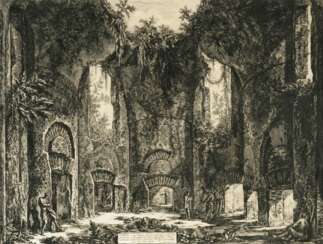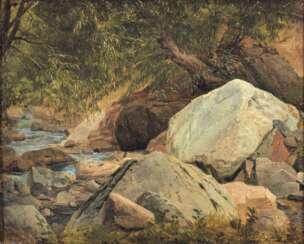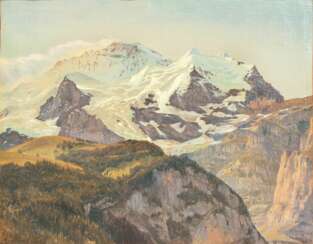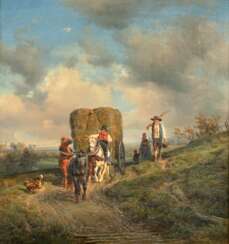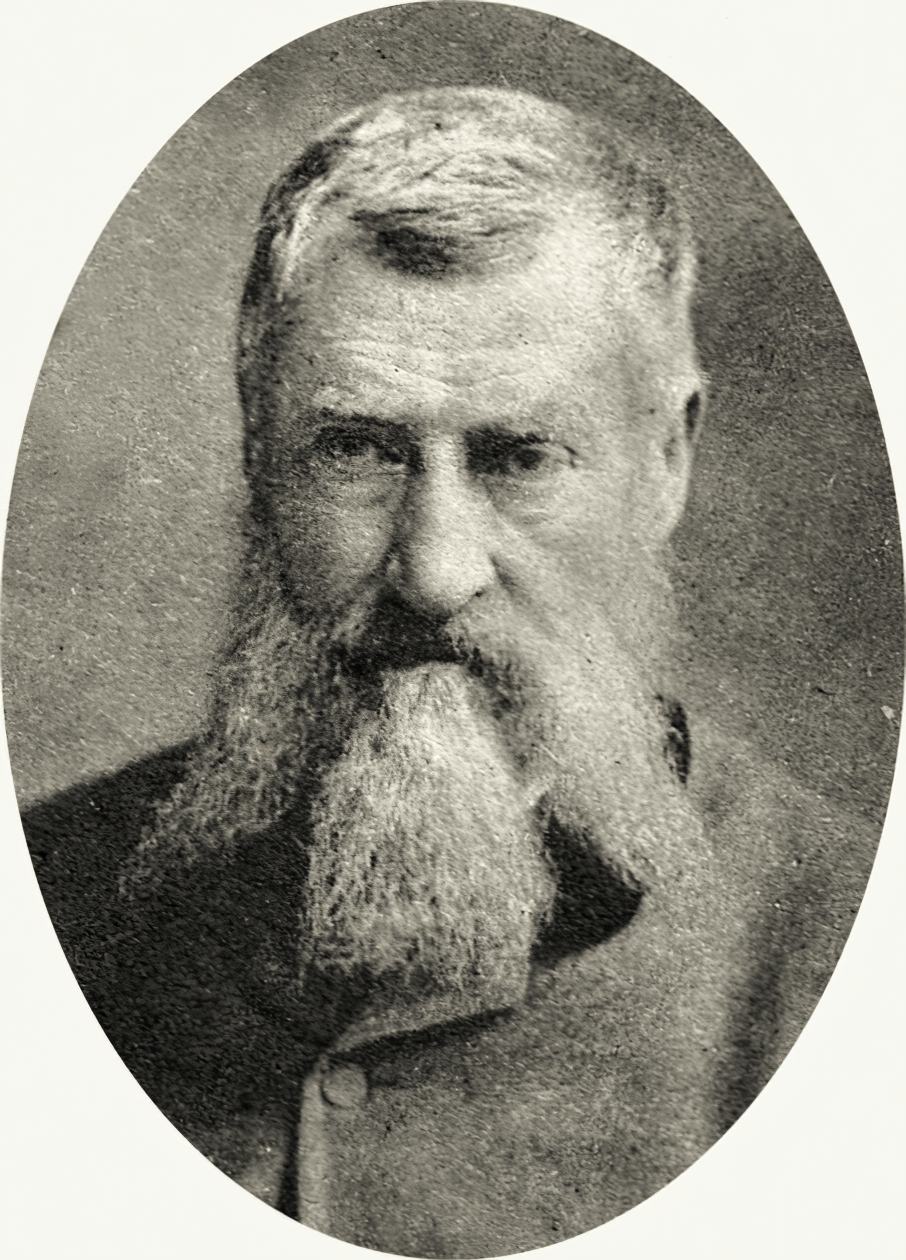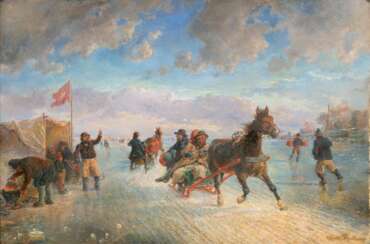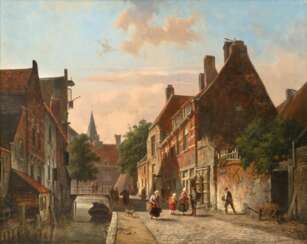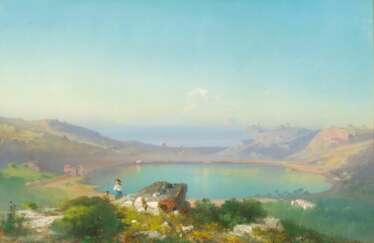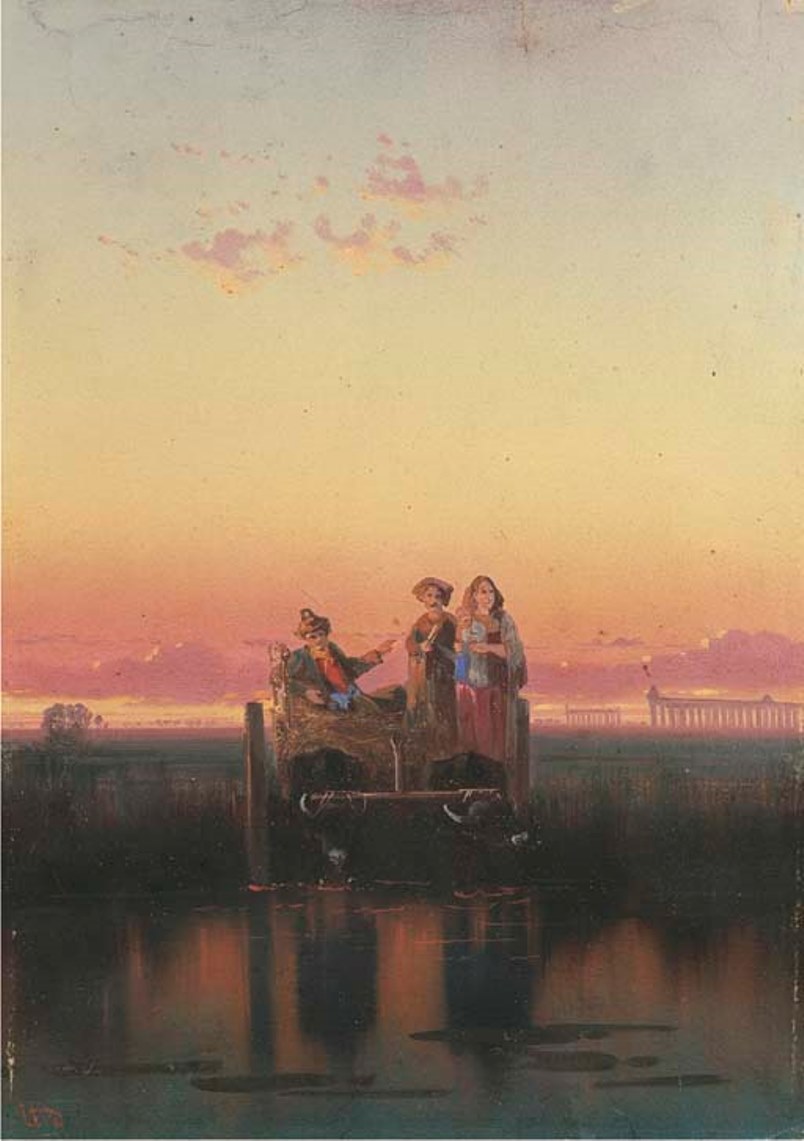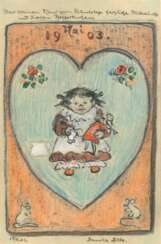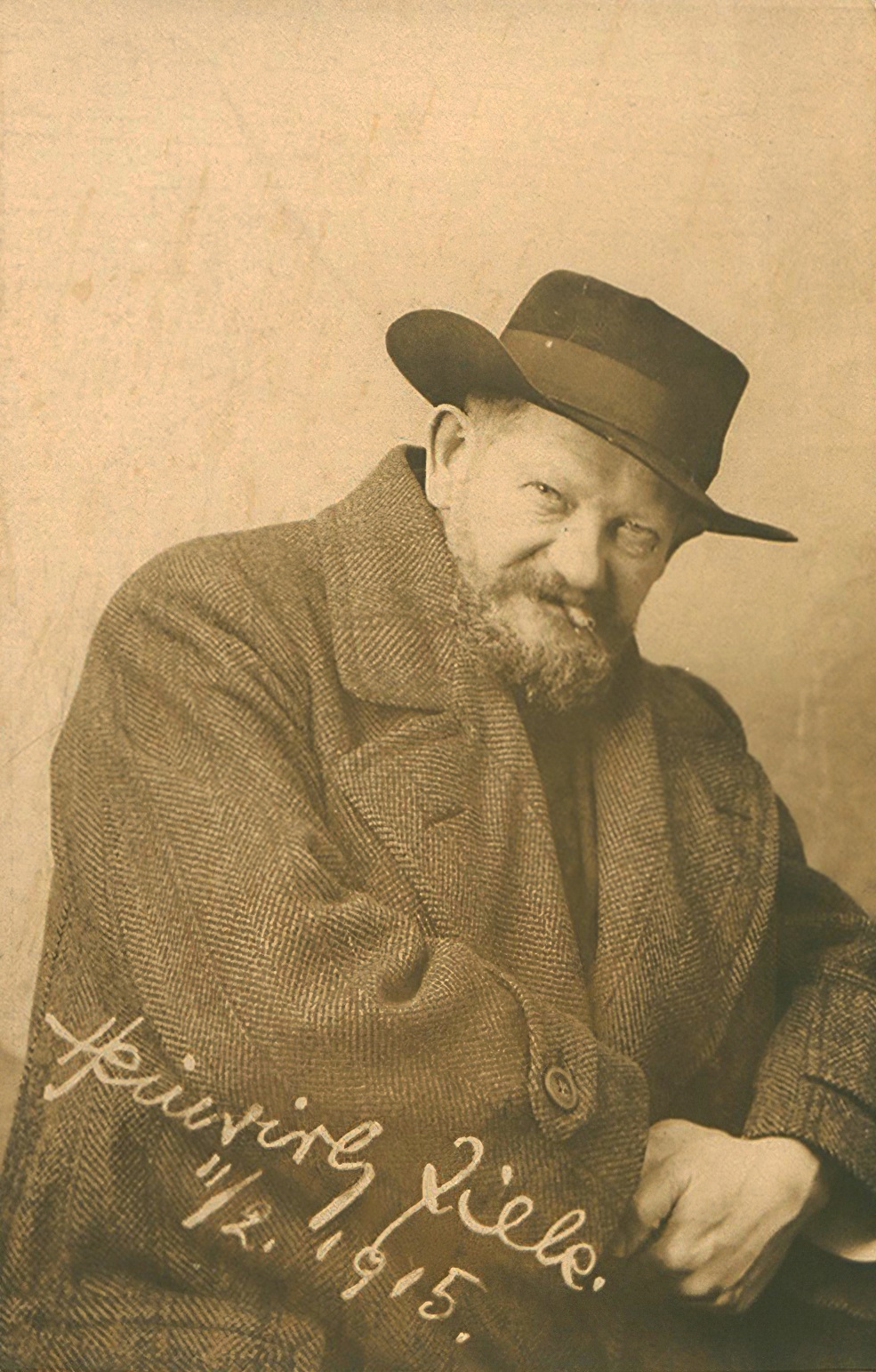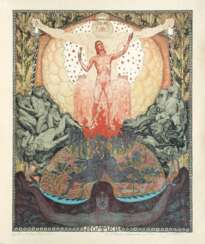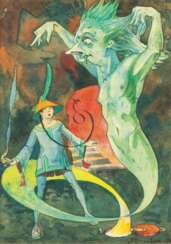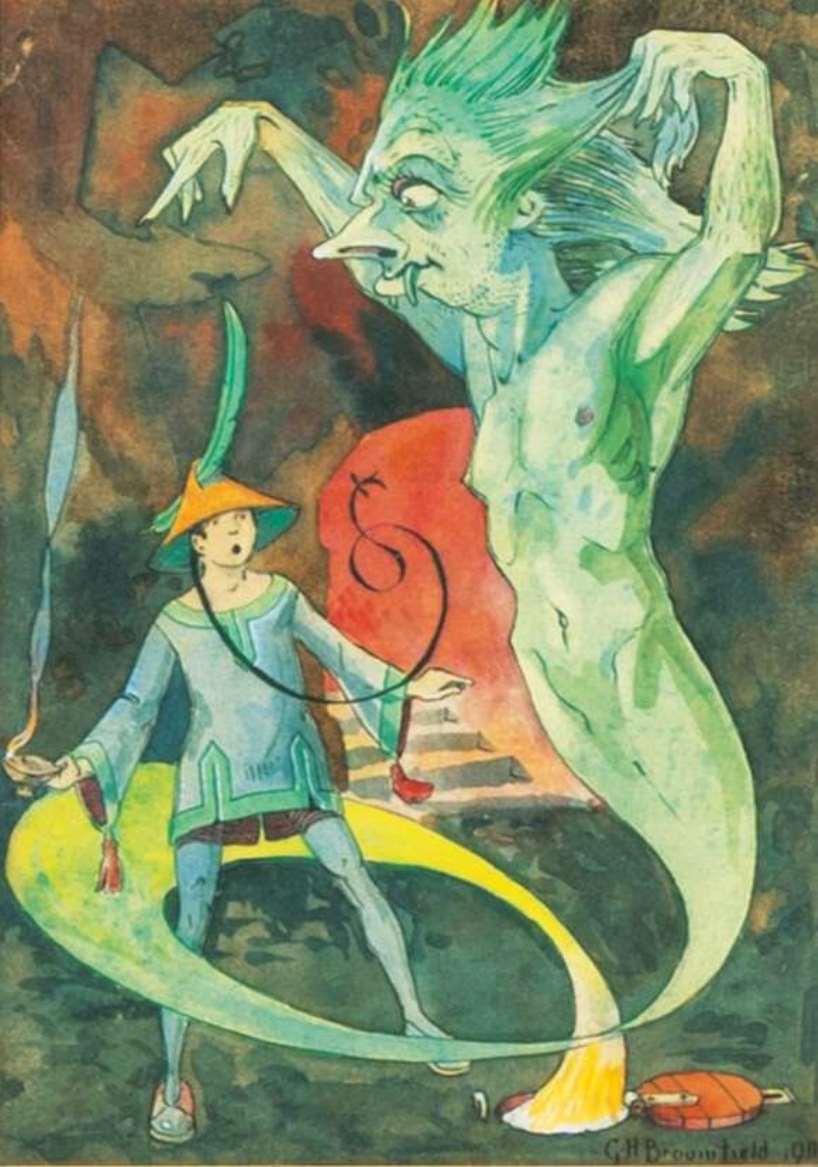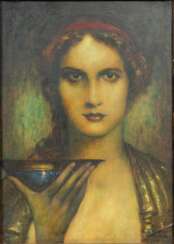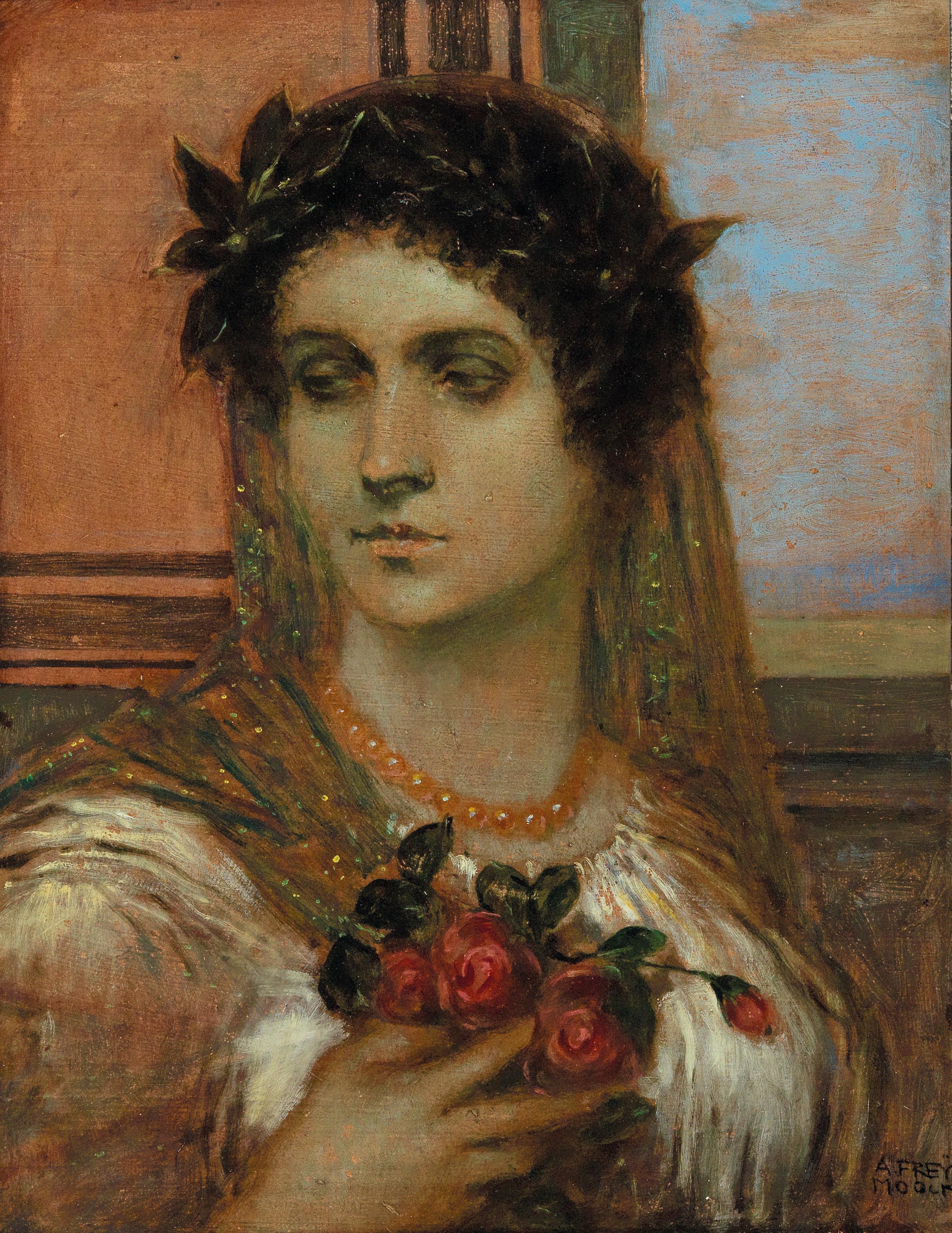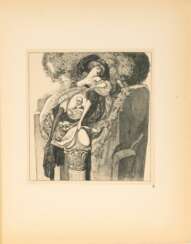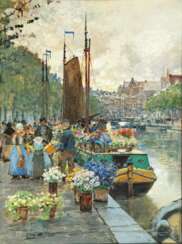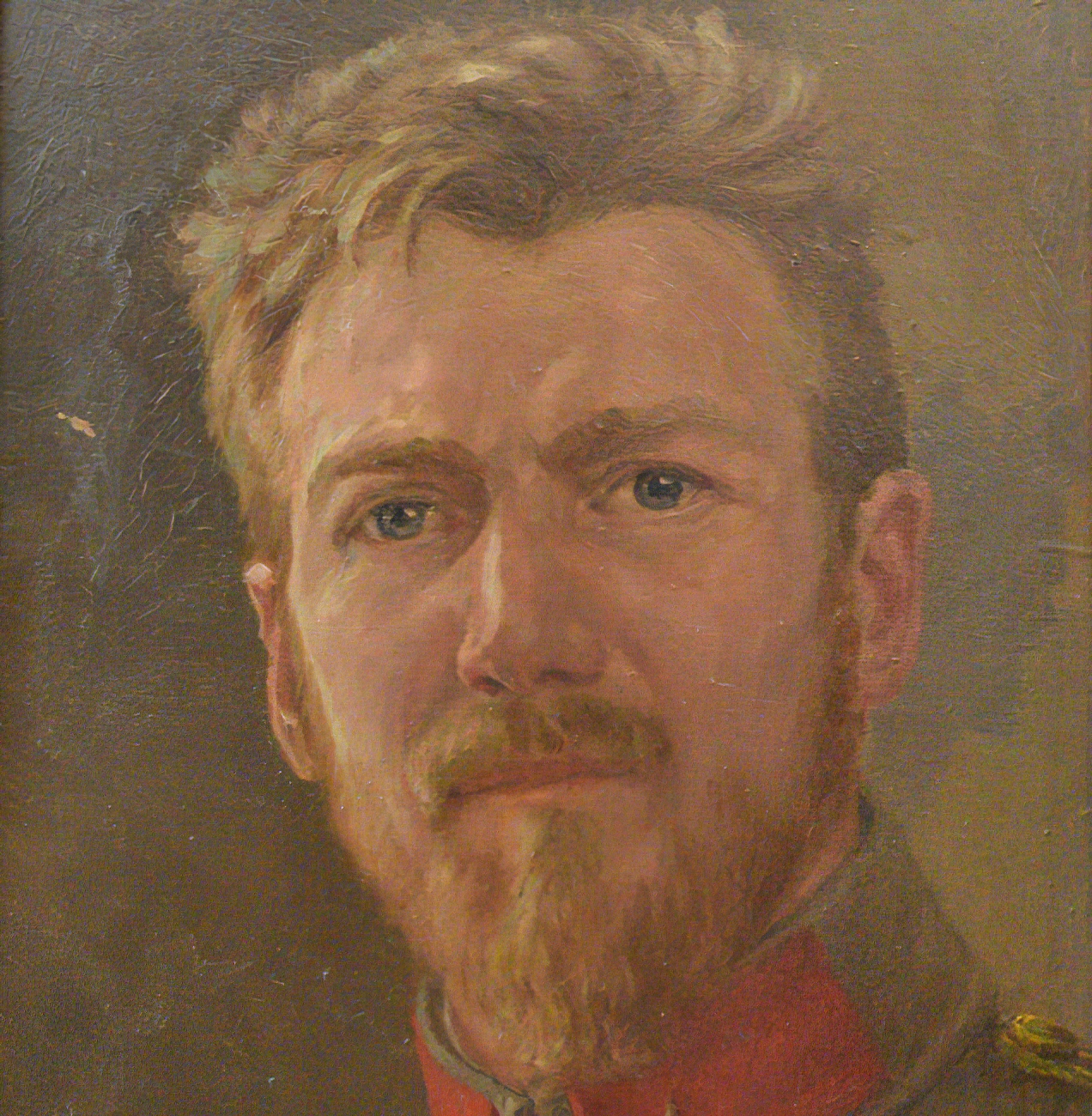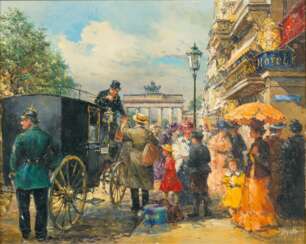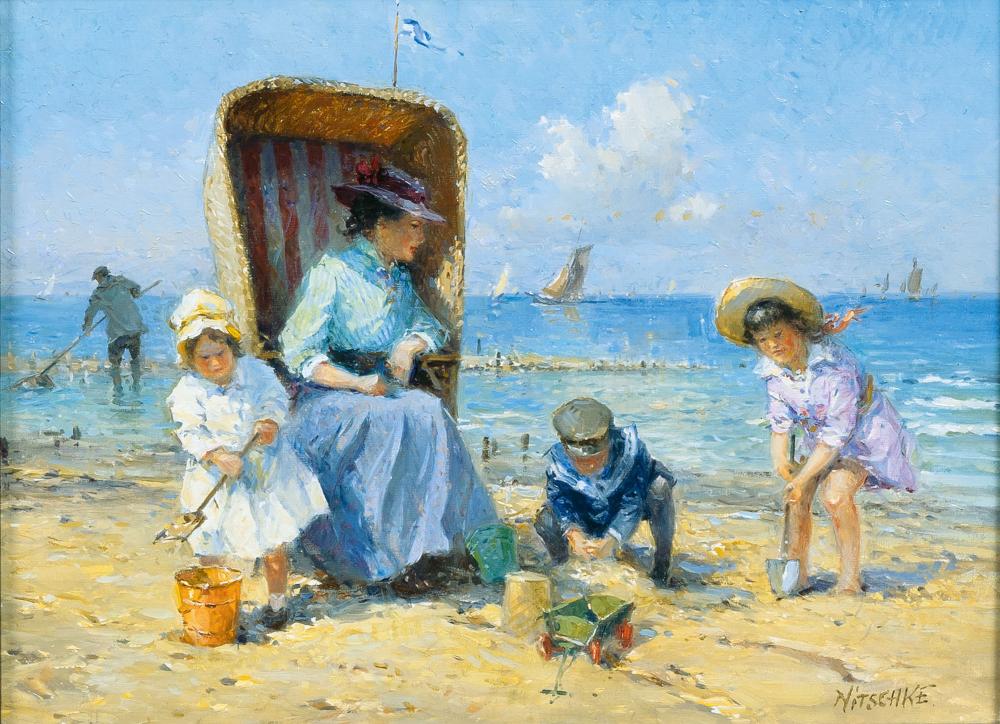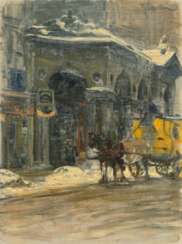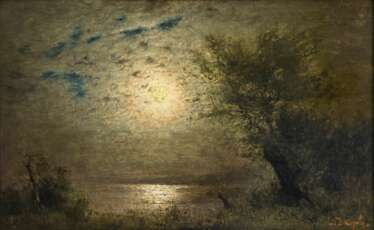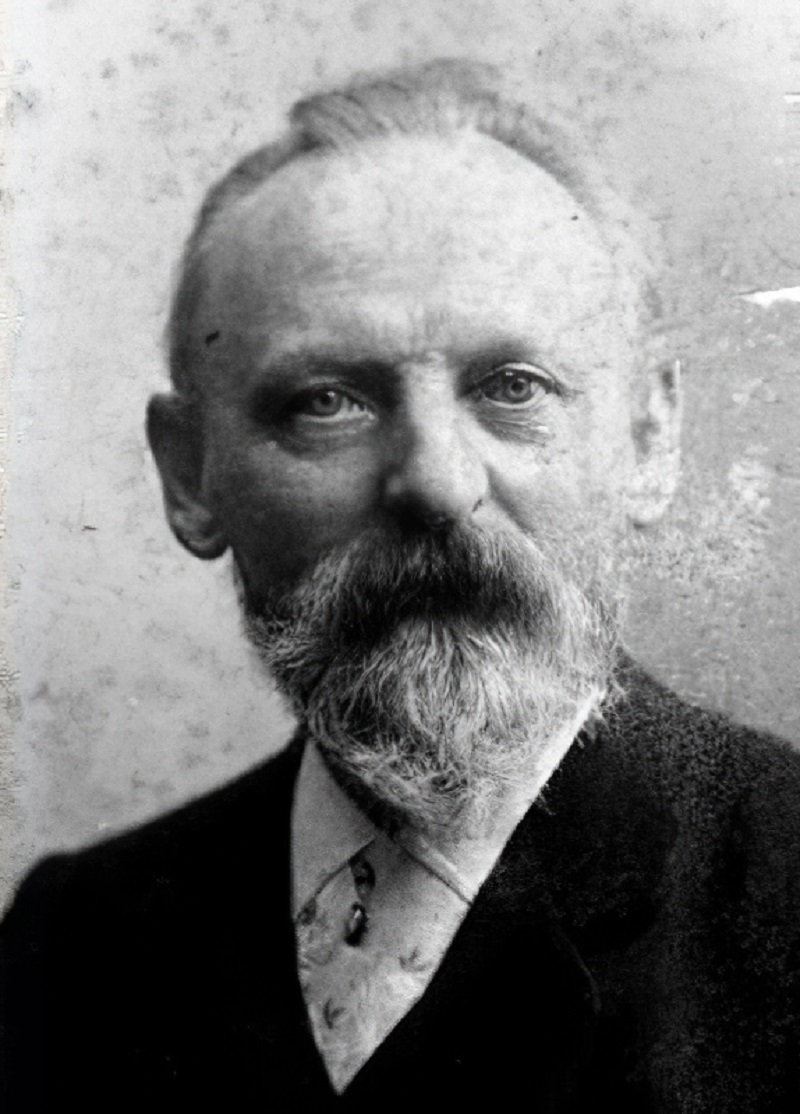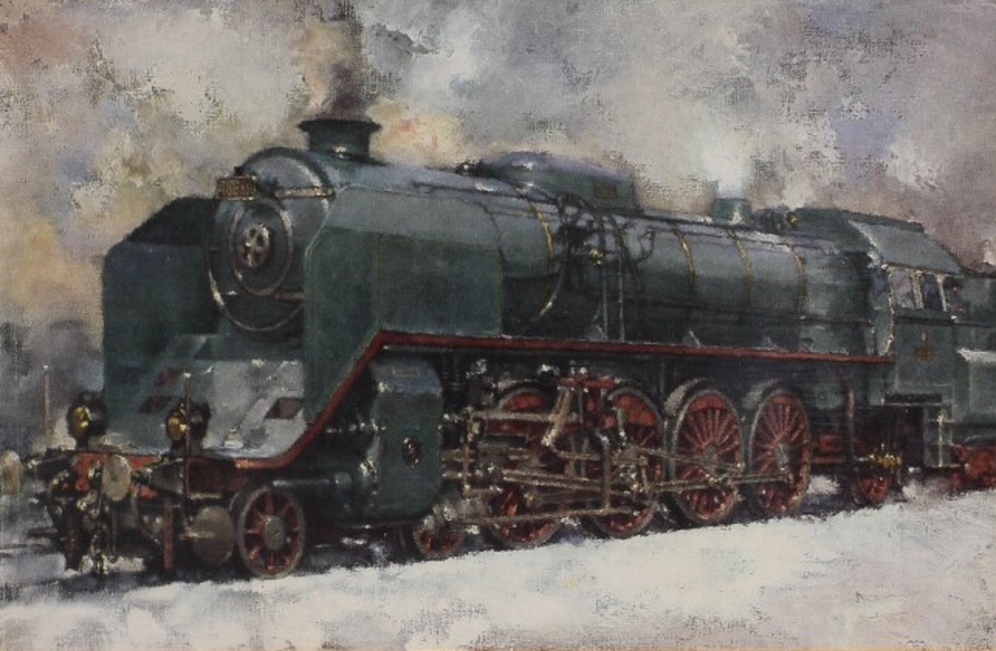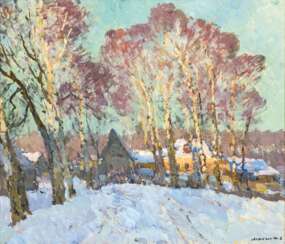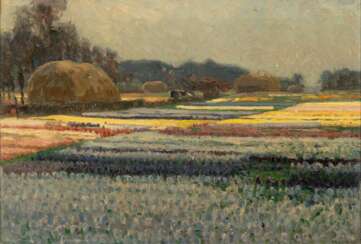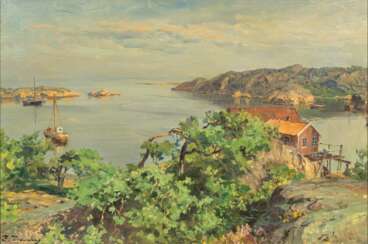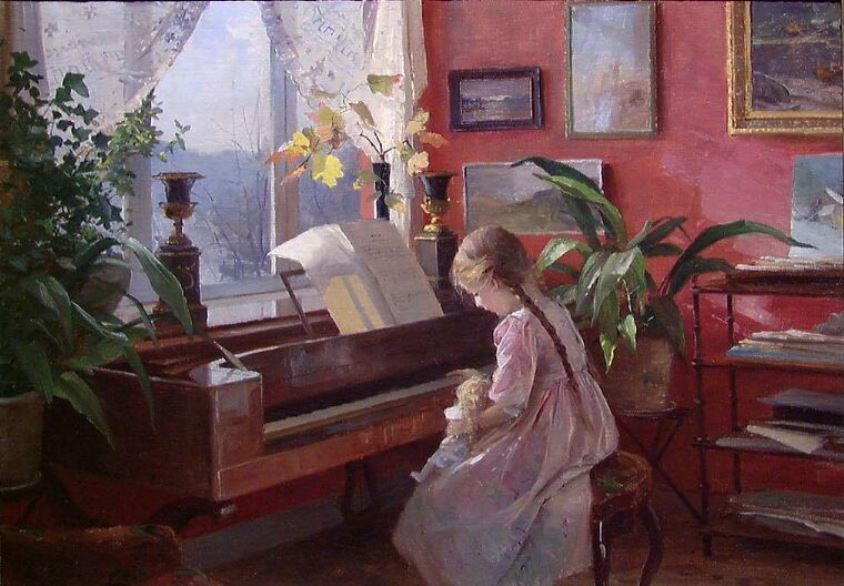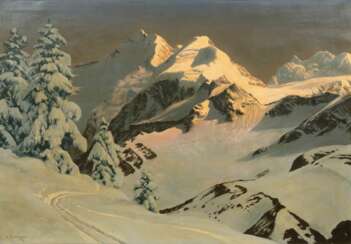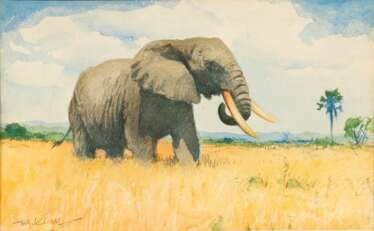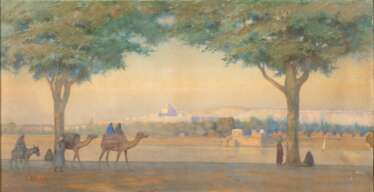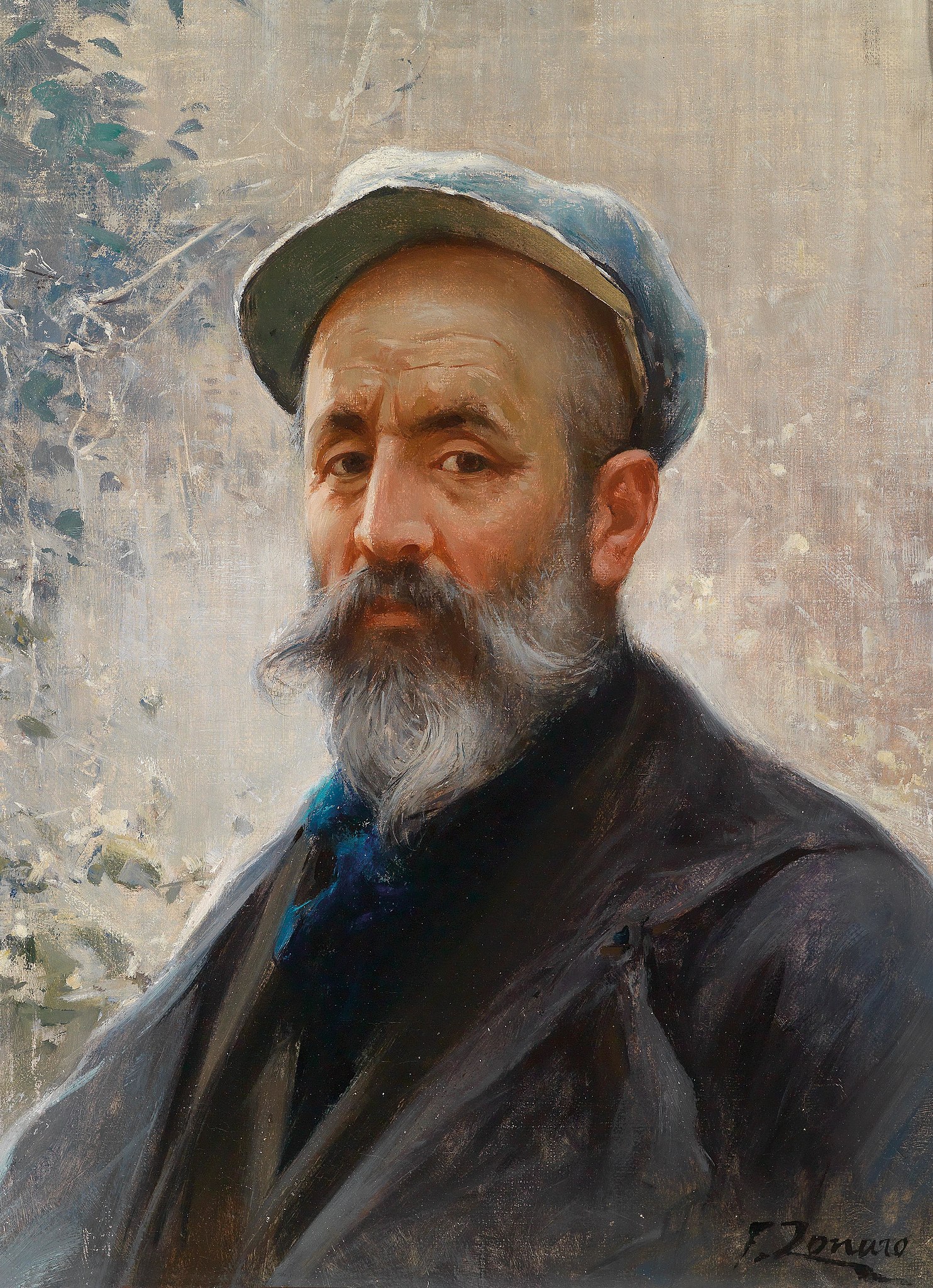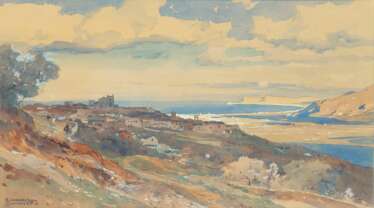
Old Masters to Impressionism — Kunst Auktion
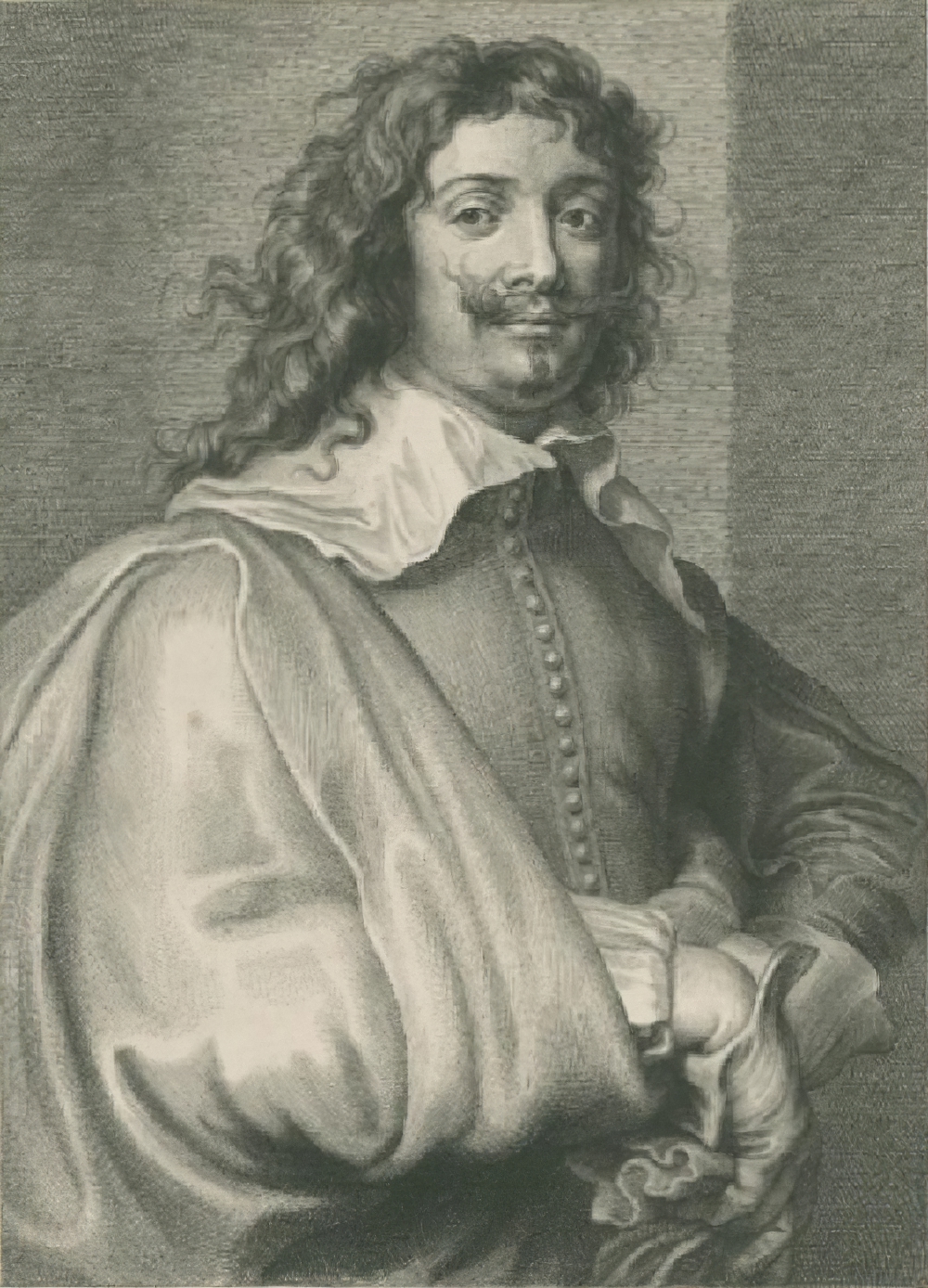
Adriaen Brouwer was a Flemish painter active in Flanders and the Dutch Republic in the first half of the 17th century. Brouwer was an important innovator of genre painting through his vivid depictions of peasants, soldiers and other "lower class" individuals engaged in drinking, smoking, card or dice playing, fighting, music making etc. in taverns or rural settings. Brouwer contributed to the development of the genre of tronies, i.e. head or facial studies, which investigate varieties of expression. In his final year he produced a few landscapes of a tragic intensity. Brouwer's work had an important influence on the next generation of Flemish and Dutch genre painters. Although Brouwer produced only a small body of work, Dutch masters Peter Paul Rubens and Rembrandt collected it.
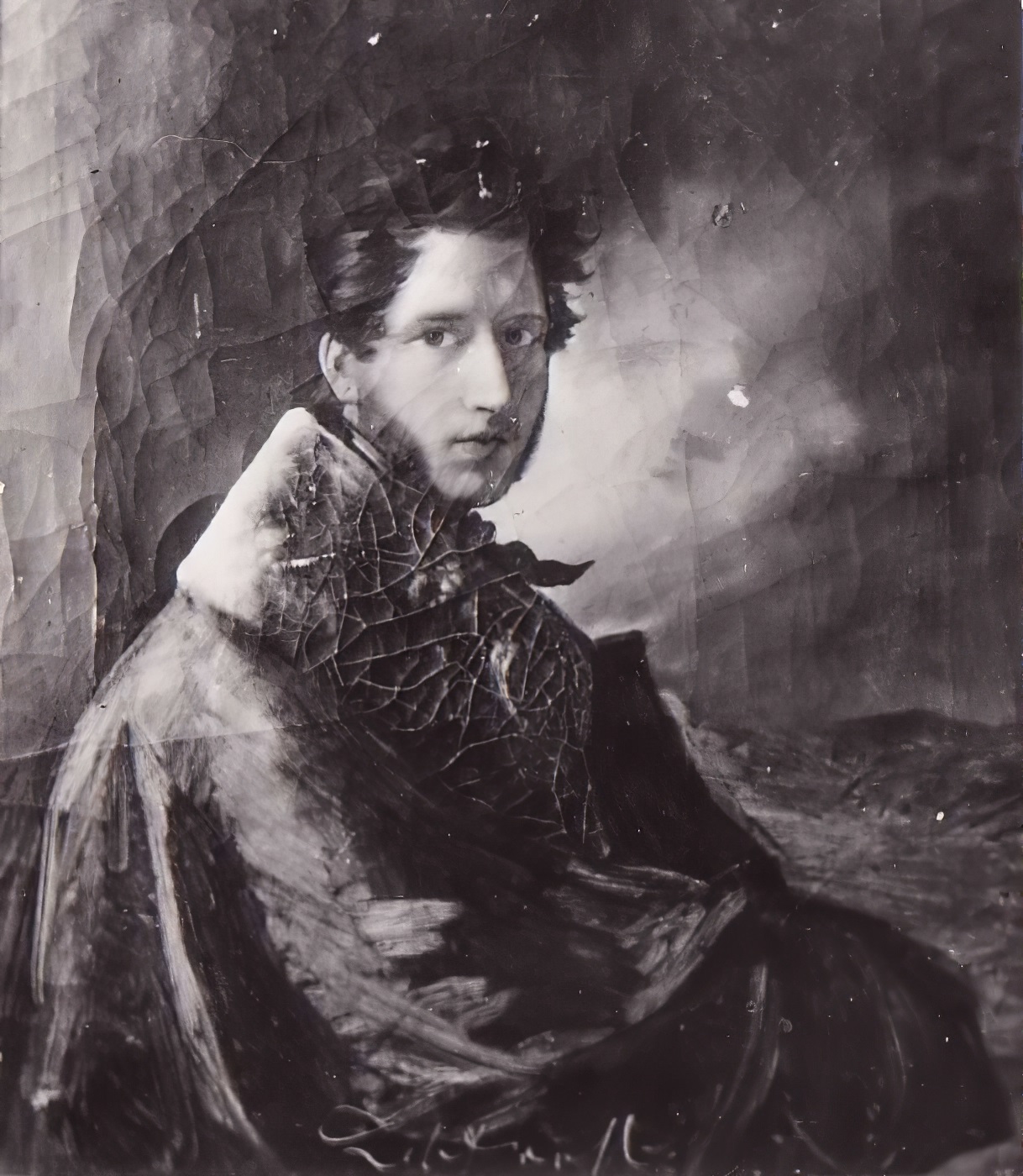
Carl Timoleon von Neff (Russian: Тимофей Андреевич Нефф) was a Baltic German painter, known for his mastery in religious, portrait, and allegorical themes. Born in 1804 in Püssi, Estonia, Neff's talent led him to study under renowned artists in Italy and Germany, honing a style that blended academic and neoclassical influences.
Neff's works are particularly revered for their delicate handling of religious subjects and the regal elegance of his portraits. He became a favored artist at the Russian court, contributing significantly to the art collection of the Imperial family. Among his notable works, the altarpieces in the palace church at Peterhof and the St. Michael's Castle in Saint Petersburg stand out, showcasing his skill in creating spiritually profound and aesthetically pleasing compositions.
For art collectors and experts, Neff's paintings not only represent a fusion of religious devotion and artistic finesse but are also a testament to the rich cultural interplay in 19th-century Russian art. Those interested in exploring or acquiring pieces by Carl Timoleon von Neff should consider signing up for updates on new sales and auction events specifically related to his works. This ensures you remain informed about the availability of his influential and sought-after pieces.
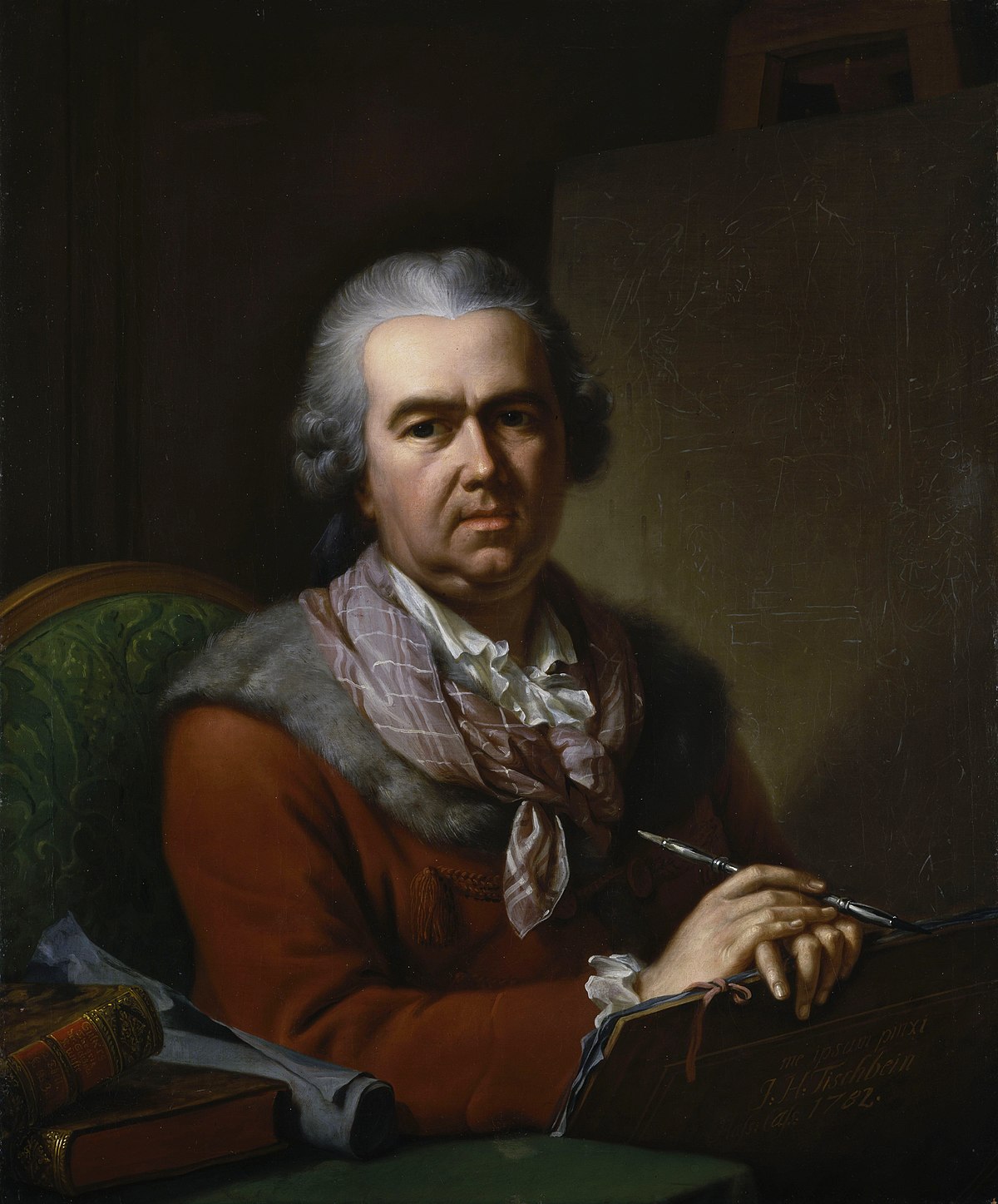
Johann Heinrich Tischbein the Elder, known as the Kasseler Tischbein, was one of the most respected European painters in the 18th century and an important member of the Tischbein family of German painters, which spanned three generations.
His work consisted primarily of portraits of the nobility, mythological scenes, and historical paintings. For his mythology paintings his models were mostly members of the upper nobility.

Giovanni Battista Piranesi was an 18th-century Italian painter, engraver, architect, and archaeologist who represented Neoclassicism and Romanticism. He was famous for creating a lot of original etchings with images of antique architecture monuments.
Giovanni Piranesi created hundreds of drawings and drafts in which he depicted the reconstructed ruins of ancient Roman buildings. His works are still used as teaching aids in the education of architectural students in many prestigious European universities. Piranesi periodically printed voluminous books with dozens of his own engravings depicting modified ancient architectural masterpieces - "graphic fantasies". His works were in demand among professional architects, who borrowed Piranesi's original ideas for their designs.
The peak of Piranesi's career came in the 1760s when, in recognition of his merits, he became an honorary member of the Guild of St. Luke and received from the Pope the title of Knight of the Golden Spur.
More than 700 of the master's original etchings have survived, printed in scholarly works.

Giovanni Battista Piranesi was an 18th-century Italian painter, engraver, architect, and archaeologist who represented Neoclassicism and Romanticism. He was famous for creating a lot of original etchings with images of antique architecture monuments.
Giovanni Piranesi created hundreds of drawings and drafts in which he depicted the reconstructed ruins of ancient Roman buildings. His works are still used as teaching aids in the education of architectural students in many prestigious European universities. Piranesi periodically printed voluminous books with dozens of his own engravings depicting modified ancient architectural masterpieces - "graphic fantasies". His works were in demand among professional architects, who borrowed Piranesi's original ideas for their designs.
The peak of Piranesi's career came in the 1760s when, in recognition of his merits, he became an honorary member of the Guild of St. Luke and received from the Pope the title of Knight of the Golden Spur.
More than 700 of the master's original etchings have survived, printed in scholarly works.
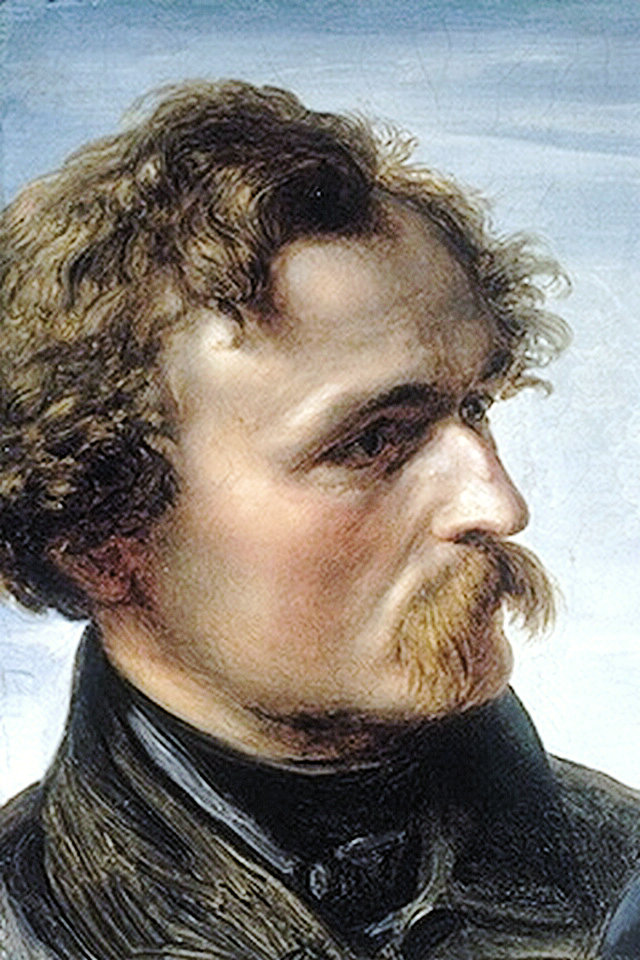
Karl Friedrich Lessing was a German painter of the mid-nineteenth century. He is known as a Romantic painter, a representative of the Düsseldorf School of painting.
Lessing began his career with melancholic-romantic landscapes and paintings on literary subjects. He later gained popularity as a landscape painter. Reproductions of his works were widely printed in German magazines of the XIX century. Later Lessing switched to historical subjects, creating historical paintings, as well as frescoes.
Lessing was a member of various art societies and academies, both German and foreign.
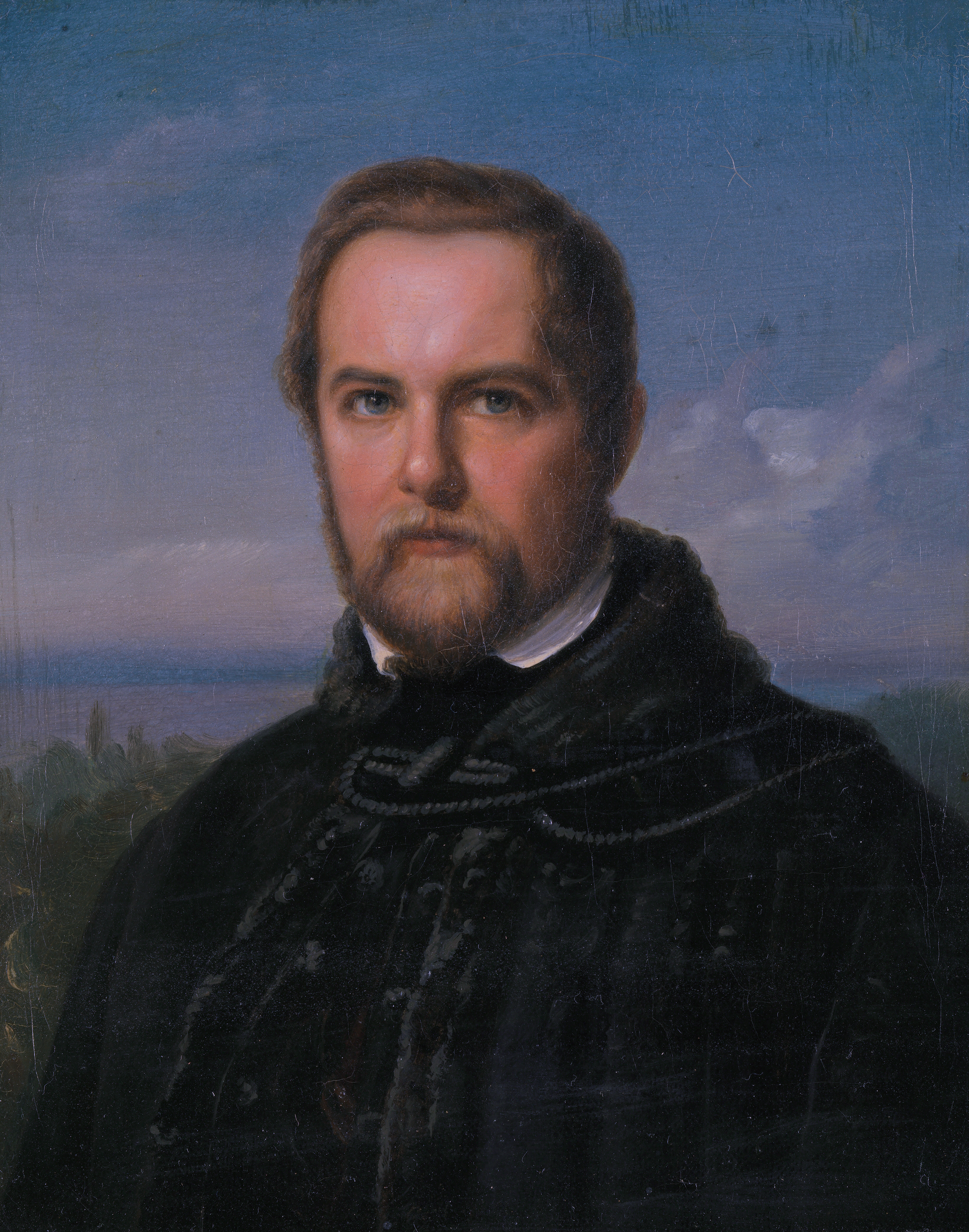
Johann Wilhelm Schirmer was a German landscape artist.
Schirmer was started as a student of historical painting under Schadow at the academy of Düsseldorf. Later, he came under the influence of Carl Friedrich Lessing and landscape painting and began painting historical landscapes in the manner of Nicolas Poussin. He became known as one of the first of the Düsseldorf school of painting.
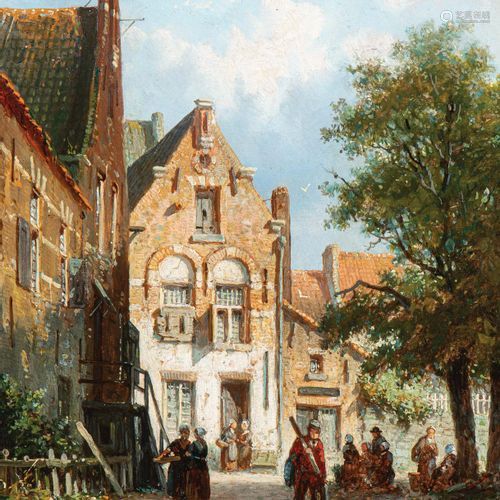
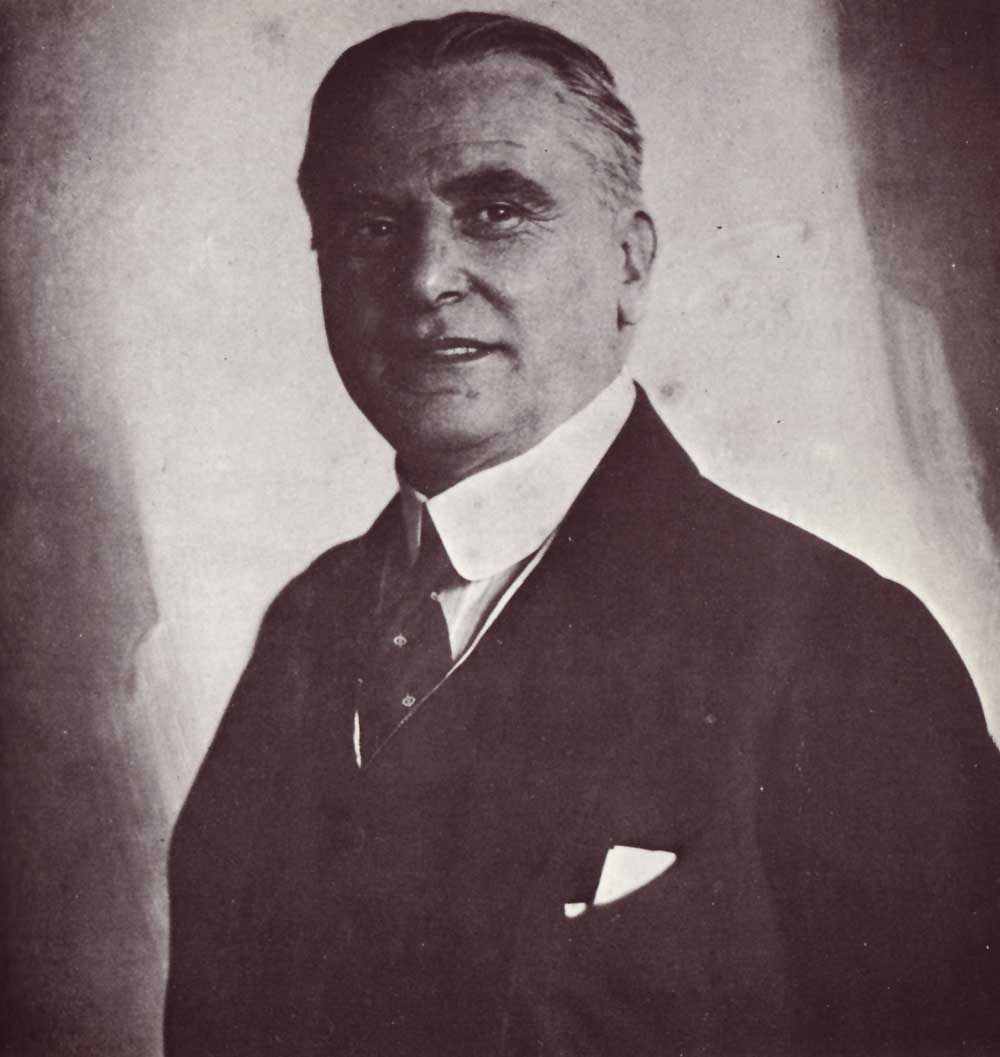
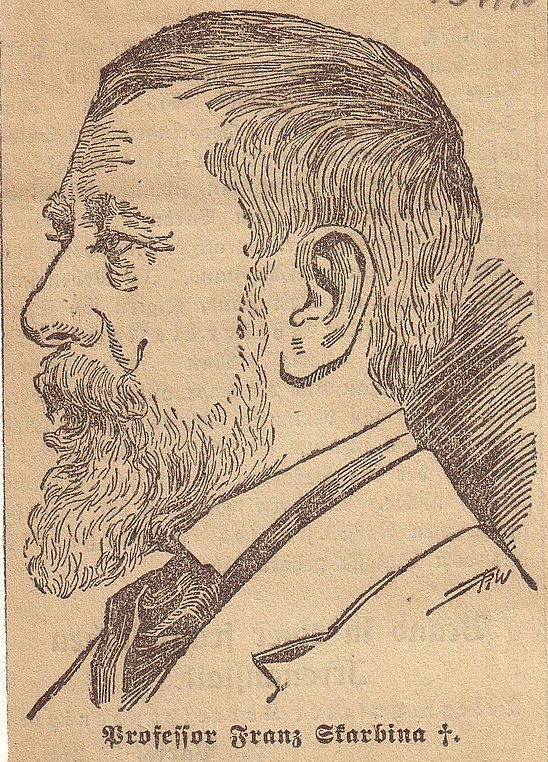
Franz Skarbina was a German painter of the last quarter of the nineteenth and early twentieth centuries. He is known as an Impressionist painter, draughtsman, graphic artist and etching artist.
Franz Scarbina came under the influence of the Impressionists early in his career, in this style he depicted city life, salons, and beach scenes. The artist worked as a teacher at the Berlin Academy of Arts, headed the anatomical drawing department at the school of the Museum of Applied Arts in Berlin. The most fruitful for the master were 1882-1886 years - he, living in Paris, created many works, visited Africa, Belgium and Holland.
Skarbina was one of the founders of the art group and a participant of the Berlin Secession. A street in Berlin is named after him.
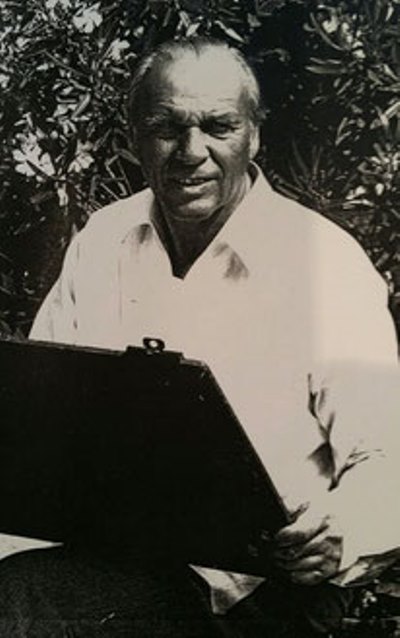
August Lüdecke-Cleve was a German animal and landscape painter.
August studied at the Düsseldorf and Munich Academies of Fine Arts. He painted mainly peaceful Rhine landscapes, often with grazing herds.
August Lüdecke-Cleve was a member of the Laetitia art group in Düsseldorf, the Munich Artists' Cooperative and the Munich Allotria Artists' Society.
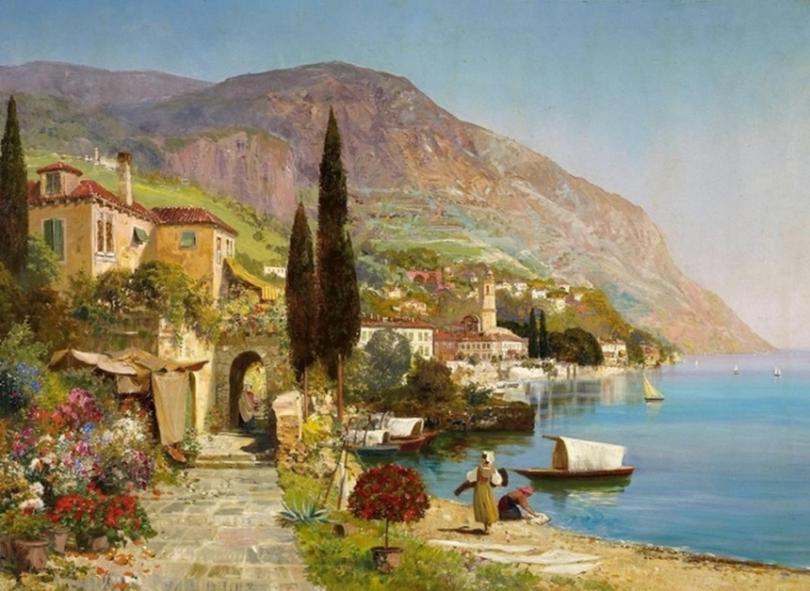
Alois Arnegger was an Austrian painter. He studied at the Academy of Fine Arts Vienna and was taught by Robert Russ and August Eisenmenger. Alois Arnegger became famous as a scene painter.

Alois Arnegger was an Austrian painter. He studied at the Academy of Fine Arts Vienna and was taught by Robert Russ and August Eisenmenger. Alois Arnegger became famous as a scene painter.
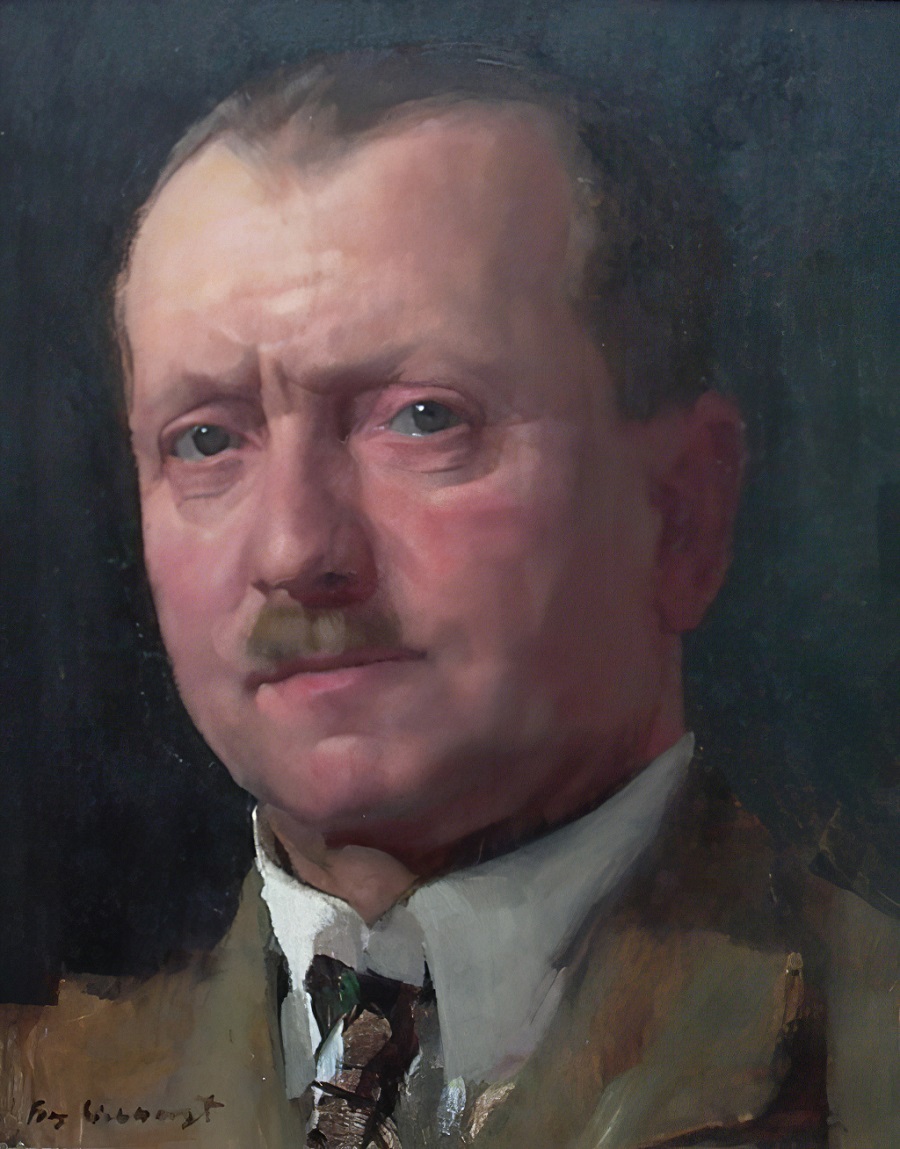
Friedrich Wilhelm Kuhnert was a German painter, author and illustrator, who specialized in animal images. After illustrating the books of Alfred Brehm, he travelled to German East Africa to observe animals in their habitat and produced numerous paintings that defined Africa for many Germans of the period.
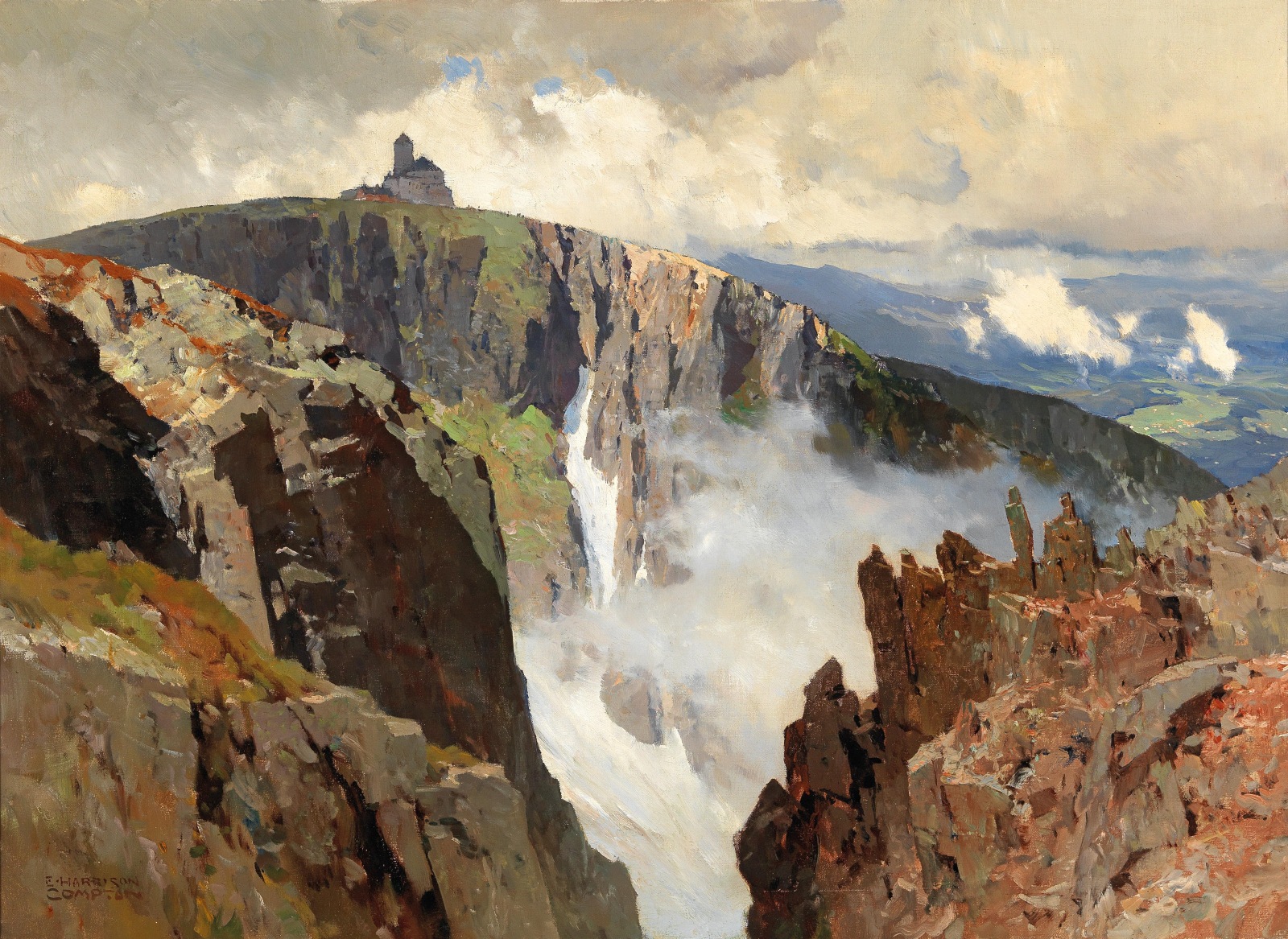
Edward Harrison Compton was a German landscape painter and illustrator of English descent.
Like his father he was inspired by the Alps to become a mountain painter (Bergmaler) working in both oils and watercolour. However, an attack of Polio at the age of 28 meant that he had to find more accessible landscapes to paint in Germany, England, northern Italy and Sicily. He also provided illustrations for several travel books published by A & C Black.
